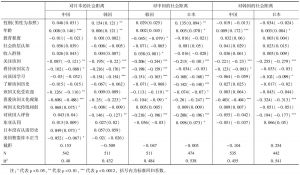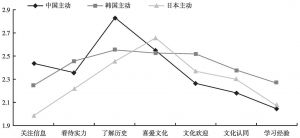章节
中日韩的社会距离与社会态度
检索正文关键字
章节目录
-
第一节 文献综述
- 一 什么是社会距离?
- 二 国家间的社会距离:全球化和民族主义的作用
- 三 研究问题:东亚国家的社会距离
-
第二节 数据与测量
- 一 数据
- 二 测量
- (一)行为层面的社会距离
- (二)主观态度层面的社会距离
- (三)自变量
-
第三节 描述分析
- 一 被动的社会距离:谁最受欢迎或排斥?
- 二 主动的社会距离:谁最开放或保守?
-
第四节 回归分析
- 一 社会经济因素的作用
- 二 文化因素的影响力很大
- 三 国民印象的失效
- 四 历史问题的影响
- 五 全球化的影响:国家层面
- 六 全球化的影响:国民层面
- 第五节 结论
相关文献
查看更多>>>









